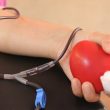Prehospital administration of crushed tablets of prasugrel loading dose in the ambulance while patient is on his way to primary PCI does not improve reperfusion markers compared against uncrushed tablet administration according to the COMPARE CRUSH, presented at the virtual TCT 2020 and simultaneously published in Circulation. There were no differences in TIMI flow of<a href="https://solaci.org/en/2020/10/21/tct-2020-crushed-prasugrel-administration-prior-pci/" title="Read more" >...</a>
The Fellow’s Corner | 2nd Clinical Case: An Explosive Mission
Read the case presentation and join the conversation through the comments in this post! Case Introduction: An Explosive Mission! 56-year-old male patient Severe smoker Hypertension Dyslipidemia Sedentary lifestyle and stress A sibling suffered from an acute myocardial infraction Cardiac markers: Standard angina, intensity of 8-9/10, 3-to-4-h long, and dyspnea (on and off for the past<a href="https://solaci.org/en/2020/09/17/the-fellows-corner-2nd-clinical-case-an-explosive-mission/" title="Read more" >...</a>
Impact on Mortality with Rivaroxaban after Discharge
Extending thromboembolic prophylaxis with rivaroxaban in patients hospitalized for heart conditions reduce fatal and thromboembolic events by 28% without major bleeding payback. Patients hospitalized for heart conditions are at risk of thromboembolic events, and this is why inhospital prophylaxis (in general with low molecular weight heparin) is within the standard treatment. It was not<a href="https://solaci.org/en/2020/08/14/impact-on-mortality-with-rivaroxaban-after-discharge/" title="Read more" >...</a>
Antiaggregation vs. Anticoagulation after Peripheral PCI
The truth is this question has no clear answer and what with do with peripheral stenting is transfer the evidence we have on coronary stenting, given the lack of standards and poor reporting on antithrombotic therapy outcomes in randomized studies on endovascular intervention. Heterogeneity is worse when it comes to venous territory. Some time ago<a href="https://solaci.org/en/2020/06/01/antiaggregation-vs-anticoagulation-after-peripheral-pci/" title="Read more" >...</a>
Thrombosis and Thromboembolism Associated with COVID-19
Coronavirus disease 2019 (COVID-19) is a viral respiratory illness that can cause a severe acute respiratory syndrome (SARS-CoV-2), predisposing patients to thrombosis (both in veins and arteries) due to excessive inflammation, platelet activation, endothelial dysfunction, and stasis. In addition, many patients receiving antithrombotic therapy for different indications may now become infected with COVID-19, which can<a href="https://solaci.org/en/2020/05/13/thrombosis-and-thromboembolism-associated-with-covid-19/" title="Read more" >...</a>
What to Do and What Not to Do in Case of PE According to the New European Guidelines
As a “friendly,” easy-to-read document, the new European guidelines on pulmonary embolism (PE) include an excellent summary chart with new and modified items (compared with the 2014 guidelines), and also some sort of final conclusion composed of crucial tips and contraindications that come in handy in case of emergency. Diagnosis stage In suspected high-risk PE,<a href="https://solaci.org/en/2020/03/04/what-to-do-and-what-not-to-do-in-case-of-pe-according-to-the-new-european-guidelines/" title="Read more" >...</a>
New European Guidelines on the Management of Lower Limb Acute Ischemia
Clinical practice guidelines are usually tedious and, frankly, while a lot of people make an enormous effort to write them, they are ultimately read in full by just a few. These new European Guidelines on the Management of Lower Limb Acute Ischemia represent a special team effort, since they include physicians, cardiologists, surgeons, and interventionists,<a href="https://solaci.org/en/2020/02/07/new-european-guidelines-on-the-management-of-lower-limb-acute-ischemia/" title="Read more" >...</a>
International Consensus to Prevent Radial Artery Occlusion After Interventions
This study provides the steps to follow in order to prevent or at least reduce radial artery occlusion after using it as an access for a diagnosis or treatment study. The use of transradial access is exponentially increasing worldwide due to its lower chance of bleeding events and vascular complications than transfemoral access. Radial artery<a href="https://solaci.org/en/2019/12/03/international-consensus-to-prevent-radial-artery-occlusion-after-interventions/" title="Read more" >...</a>
Permanent Carotid Coil Filters in Patients with Atrial Fibrillation
This new strategy to reduce the risk of stroke in patients with atrial fibrillation is technically feasible and safe, even though long-term outcomes are yet to be seen and despite the evidence available, for instance, left atrial appendage closure devices. It is true that they could be used simultaneously, but its synergy and cost have<a href="https://solaci.org/en/2019/08/29/permanent-carotid-coil-filters-in-patients-with-atrial-fibrillation/" title="Read more" >...</a>
Do NOACs Result in Any Benefit in TAVR?
Courtesy of Dr. Carlos Fava. The need for anticoagulation after transcatheter aortic valve replacement (TAVR) is over 15% according to different reports and, so far, no one has analyzed in depth whether new oral anticoagulant agents (non-vitamin K oral anticoagulants [NOACs]) result in superior benefit compared with classic vitamin K antagonists (VKAs). This study analyzed<a href="https://solaci.org/en/2019/08/23/do-noacs-result-in-any-benefit-in-tavr/" title="Read more" >...</a>









